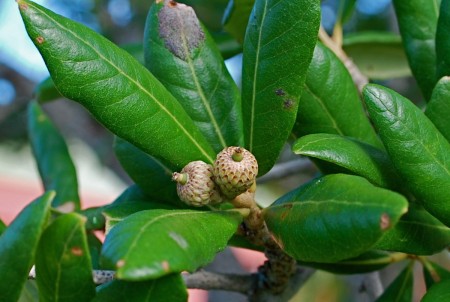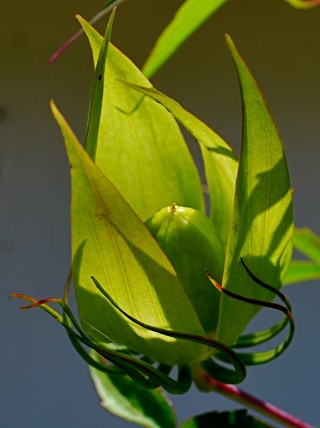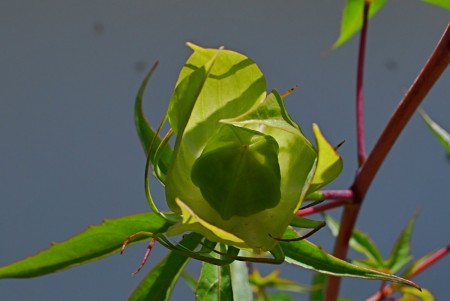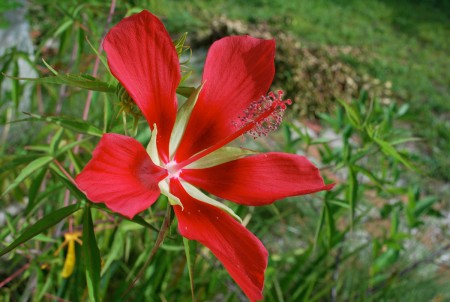There’s some nice scenery in south Florida in late June, for those who can brave the heat and the humidity. In our front yard, our live oak trees (Quercus virginiana) are throwing up some very nice little acorns, after having borne some lovely flowers this spring:
It’s hard to tell scale in a close-up photograph, but since the leaves of this young tree are less than 3 inches long, that ought to give you some idea of how diminutive these acorns are at this stage.
Live oaks are among the most useful and prettiest trees you can grow; our neighborhood has some decent ones, but one of our nearby neighborhoods has some truly lovely specimens, even after the prunings by hurricane of 2004 and 2005. Whenever we can, we try to ride our bikes through these lovely tree-lined streets.
In the back yard, the scarlet hibiscus (Hibiscus coccineus) was preparing to bust out in flower this past weekend:
And then on Monday, the promise of the buds bore fruit (or should I say, flower?):
And, last but not least for today’s post, there’s a shot of the fruit of Annona glabra, the pond apple. Native to Florida and the West Indies, and even Central and South America, this is the northernmost representative of the large tropical genus in the family Annonaceae. The fruits are an important food for wildlife, although they rarely seem appetizing to even the most hardcore Florida naturalists. I have smelled one ripe fruit, once, that sounded like it might be something I could try to eat, but I never did try to eat it. Gil Nelson calls its fruit “edible but not particularly tasty”; even Steve Bass, who has probably tried to eat just about everything ever described as edible mentions obliquely, in his write-up of the species, that “there are several tropical species in the genus Annona which have tastier fruits.”






